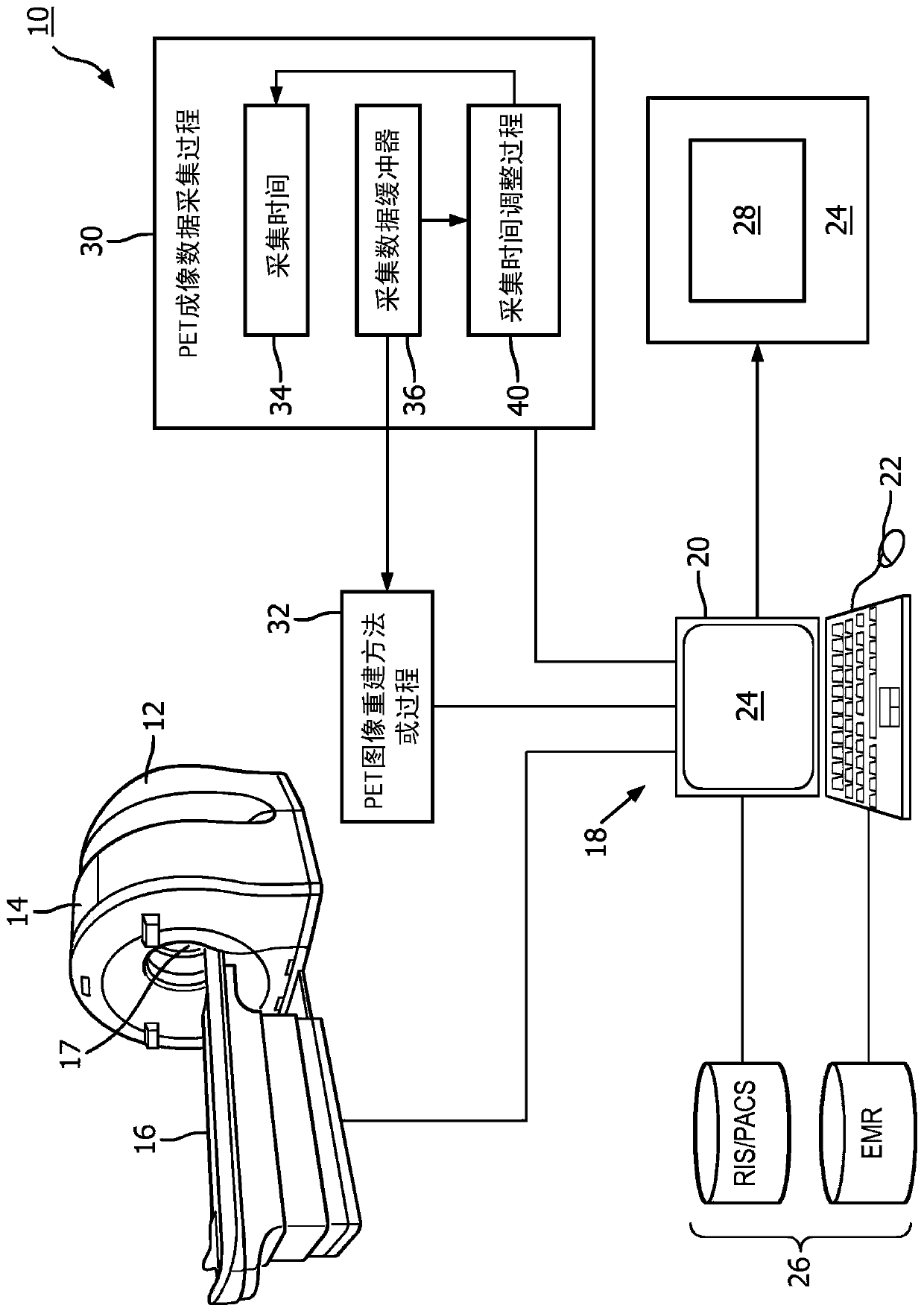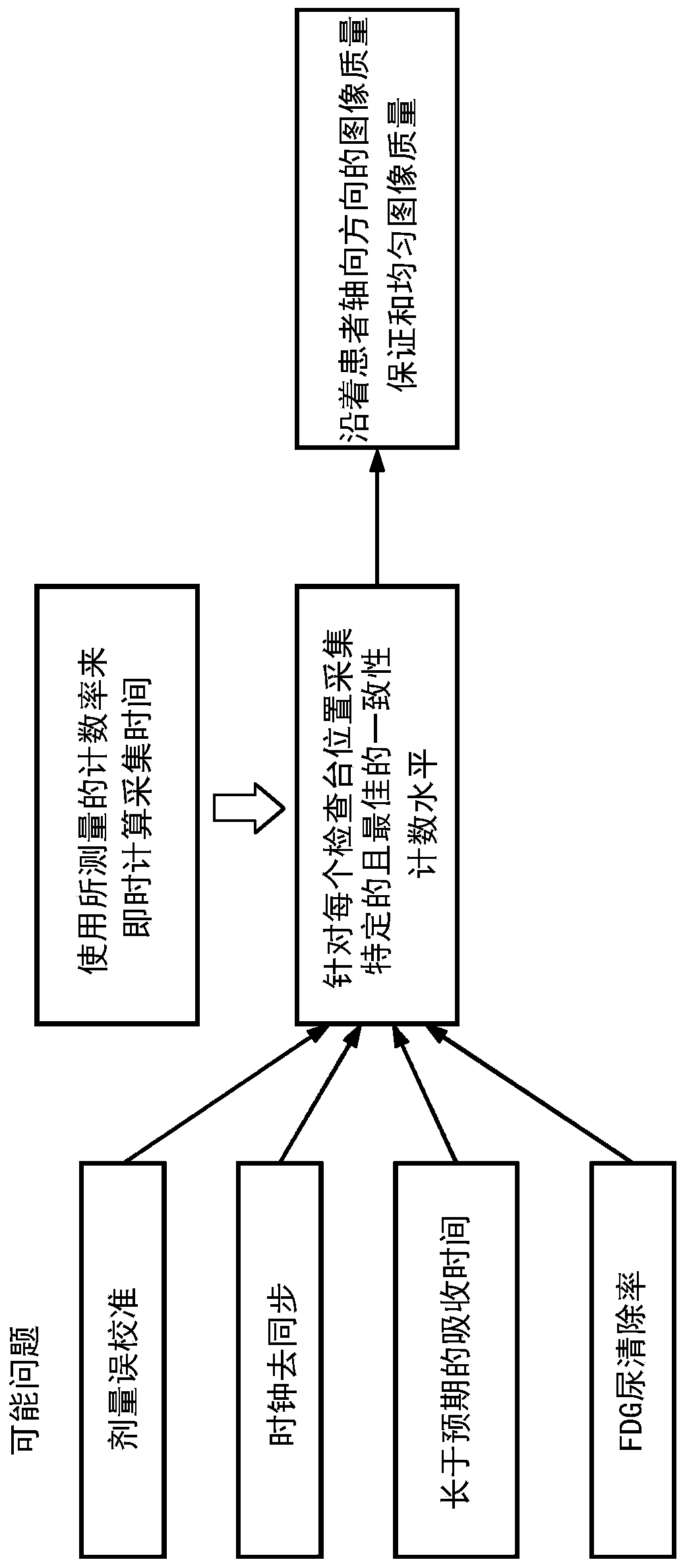Automatic on-the-fly positron emission tomography (PET) scan planning and optimization
A tomography and electronic technology, applied in the fields of radiological diagnosis instruments, diagnosis, echo tomography, etc., can solve problems such as inability to adapt to typical clinical workflow changes, inability to adapt to individual patients, etc., to improve image quality, uniformity Image quality, effect of reducing scan time
- Summary
- Abstract
- Description
- Claims
- Application Information
AI Technical Summary
Problems solved by technology
Method used
Image
Examples
Embodiment Construction
[0019] Existing CT / PET workflows require the administration of radiopharmaceuticals for PET, followed by a defined time interval, typically around one hour, in which the patient is expected to remain still. The patient is then loaded into the CT / PET system and CT imaging is performed to establish the axial FOV and generate an attenuation map for use in PET reconstruction. PET imaging data acquisition is then performed in a single acquisition interval, or stepwise at multiple couch positions for longer axial FOVs. In selecting the radiopharmaceutical dose and acquisition time(s), by standard setting for the type of imaging procedure being performed and the waiting period between the administration of the radiopharmaceutical and the start of imaging and for the patient body mass index (BMI) dose adjustments to guide medical personnel. Dose and acquisition time settings are designed to ensure that enough positron-electron annihilation events are recorded to provide the desired i...
PUM
 Login to View More
Login to View More Abstract
Description
Claims
Application Information
 Login to View More
Login to View More - R&D
- Intellectual Property
- Life Sciences
- Materials
- Tech Scout
- Unparalleled Data Quality
- Higher Quality Content
- 60% Fewer Hallucinations
Browse by: Latest US Patents, China's latest patents, Technical Efficacy Thesaurus, Application Domain, Technology Topic, Popular Technical Reports.
© 2025 PatSnap. All rights reserved.Legal|Privacy policy|Modern Slavery Act Transparency Statement|Sitemap|About US| Contact US: help@patsnap.com



